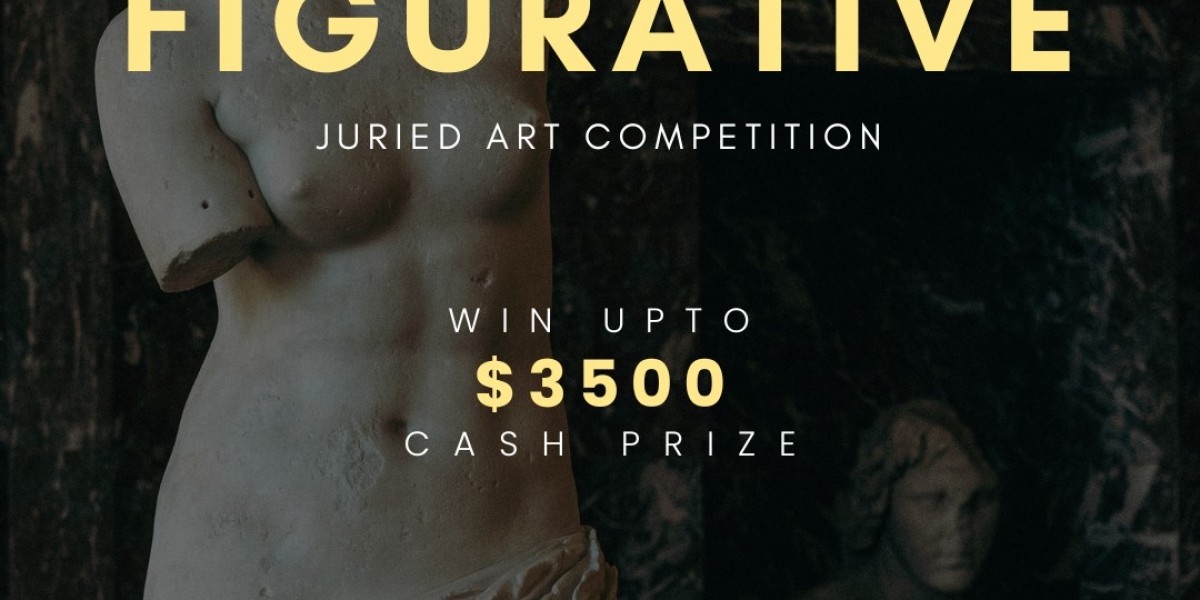Human emotions, perspective and ideas have always been the popular subjects of depiction. Through artistic expressions, artists have portrayed the forms and figures vividly. The most used form and artistic style of depiction of human figures and expressions is figurative art. Another parallel form can be the abstract figurative art, that is used to portray human forms in non-representational ways, with abstractions. These are the two most fascinating approaches to depicting the human form, no doubt, but there are differences in their presentation and ideologies.
While figurative artwork represents tangible and realistic subjects, abstract figurative art tries to steer away from reality, creating a deeper or more subjective experience. Yes, these two styles differ in expression and meaning, but both of them influence our understanding of the human figure and form. So, let us explore more of this genre, know about their distinctions and the meaning they bring to the world of figurative masterpieces.
What is Figurative Art?
So, what is figurative art? It refers to the artistic style that deals with recognizable objects, particularly the human form. Quite distinct from the unreal and unrecognizable form, figurative paintings aim to capture the physical world, while abstract or conceptual art tries to capture the inner and the emotional side of portraits. Figurative art in a way is identifiable, though not necessarily realistic. In abstract creation, artists use expressive and bold brushstrokes, exaggerated features, or symbolic elements to maintain a connection to the real-world figures and forms, though in an obscure way.
Key Characteristics of Figurative Artwork:
Figurative artworks include recognizable forms and human figures, often animals, or other objects of portrayal.
This kind of art focuses more on anatomical study, movement, and emotion.
It can range from highly realistic to impressionistic styles.
Figuratives often include storytelling through engaging composition and detail.
Whenever we think of great masterpieces in the figurative, we cannot leave out the masters of Renaissance, Baroque period. They include the most famous figurative artists like Leonardo da Vinci, Michelangelo, Caravaggio, Rembrandt, etc.
These master artists had embraced realism with vivid technical study and mastery of techniques. Some of the contemporary figurative artists include names like Lucian Freud and Jenny Saville who continues to explore the human body from a different perspective in their detailed figurative paintings, which also stir emotions and controversy at the same time.
What is Abstract Figurative Art
Unlike the clear representation of figurative art, the abstract version deviates from the real-world subjects. With abstract figurative art, artists experiment with distorted shapes, forms, simplifies, and redefines the forms of expression. With bold and exaggerated strokes, and unconventional compositions the artists try to release the hidden emotions or deeper meanings. They are much ahead of the literal compositions.
Key Characteristics of Abstract Figurative Art:
Abstract form of human figure is often not recognizable, fragmented or distorted
This form focuses more on bold colors, form, and hints of realism
Abstraction creates an emotional and symbolic interpretation of the human or physical figures.
Abstract art of figurative mostly depends on viewers’ interpretation, according to their social standing and emotional depth.
Some of the famous abstract figurative art creators include the famous Cubist Pablo Picasso, who was passionate about breaking all myths of realism and seeing humans from the perspective of geometrical shapes. There is another abstractionist like Francis Bacon, known for his haunted, deconstructed human forms. Nowadays, contemporary artists continue to experiment with figurative abstract art, blending realism with abstraction in the right proportions to bring out the intended figures and postures.
A Creative Dialogue Between Figurative and Abstract Art
While figurative and abstract figurative art differ greatly in concept, execution, and expression, they share a common purpose: to explore the human condition and experience through varied techniques and artistic visions.
Figurative art focuses on the realistic portrayal of the human form, using naturalistic colors and accurate shapes to depict emotions and tell clear, relatable stories. Faces and features are central to communicating the narrative, grounding the viewer in reality.
Abstract figurative art, on the other hand, distorts or fragments the human form. It emphasizes emotional intensity over realism, using bold colors, exaggerated forms, and subjective expression. Rather than telling a direct story, it invites viewers to interpret the subject through their own lens, creating a more personal and introspective experience.
How and Why Do Artists Choose One over the Other?
Both figurative artwork and abstract figurative art can be an artist’s choice, depending on the intent, style, and aim of creation. Some are fond of storytelling and precision through figurative, while others use abstraction in figurative paintings, embracing the raw energy translated to create engaging and deeply personal narratives:
A figurative artist will focus more on creating lifelike portraits that say a lot about the individual and their mannerisms.
An abstract figurative artist deviates from realistic paintings, and highlights the same person with surreal hints, illusive shapes, bold colors, or layered textures. This way, deeper psychological messages are transmitted to the viewers.
Finding Meaning in the Human Form
No wonder, figurative paintings and figurative abstract art have their own share of pros and cons – they allow artists to express human experience in their own distinctive ways.
Through a realistic portrait, an artist may capture a person’s likeness, while an abstract interpretation may reveal their inner struggles, or dreams. A budding artist should follow the works of both domains of expression, explore both styles. Both of them impact the psyche of the viewers to make bold statements about the human figures they deal with.
So, it’s up to the artist to take up the conventional figurative art form, or go with abstract figurative art which has more depth. No one can tell which one is better, as they are both sides of the same coin. Both the styles help artists to shape our understanding of the human form in art. This is the time you must explore some epoch-making work on figurative, and rejoice in their creations.









